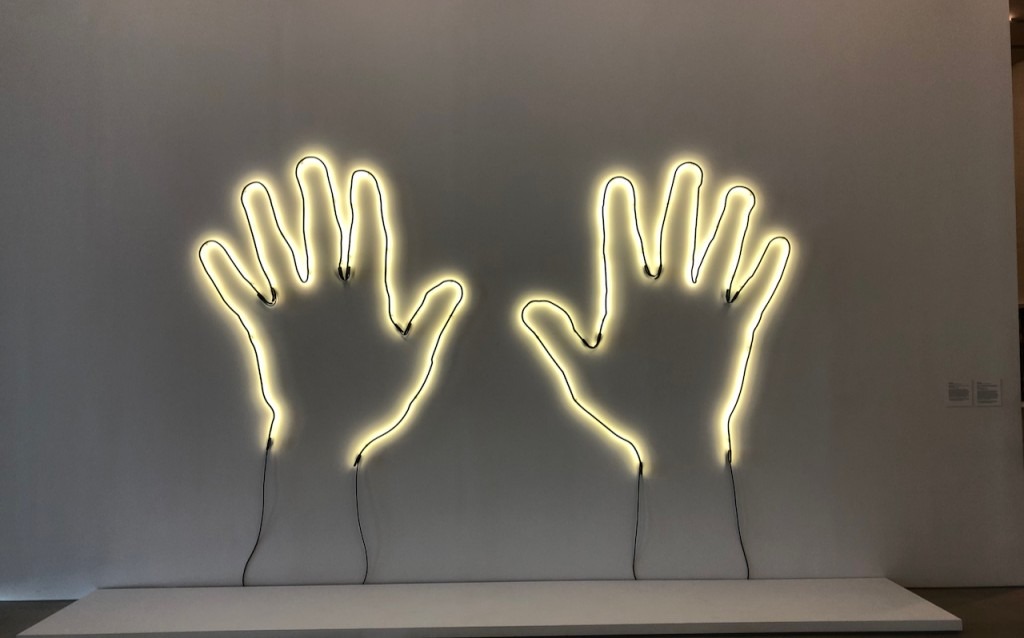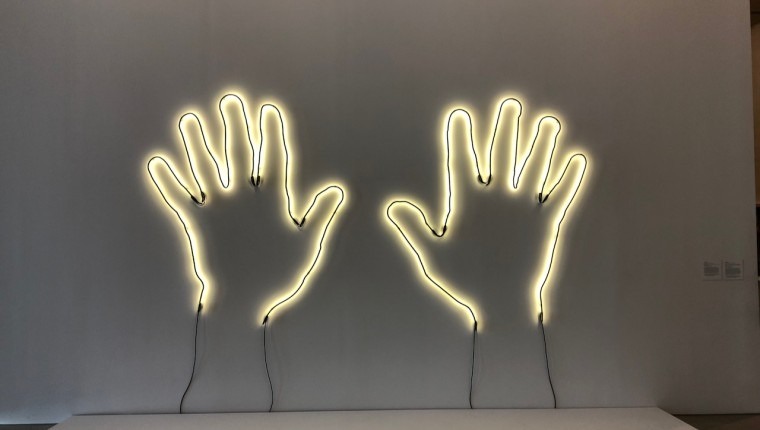Story and Photos by Tony Wong Palms
. . .
Eye-Opening Artworks in Miami
. . .
I was recently in Miami attending an event relating to my practice of meditation – and while there, took the opportunity to see what art there was to see.
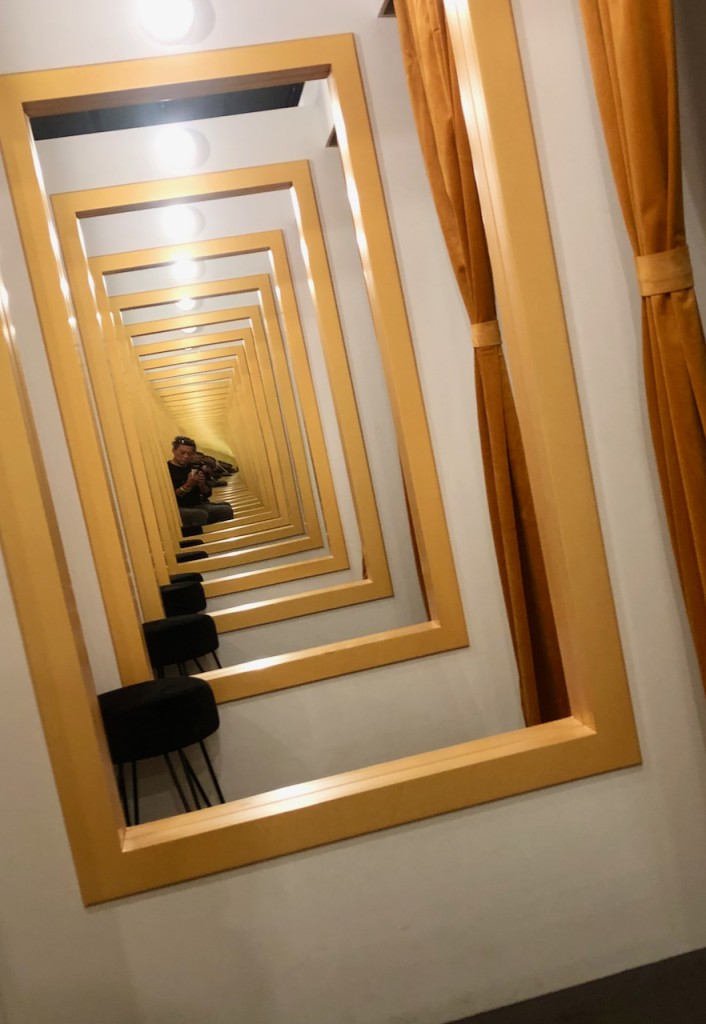
Pérez Art Museum Miami
Since I was staying at a nearby hotel, I went to the downtown Miami-Dade Cultural Center, which houses the HistoryMiami Museum and the main branch of the public library.

The Miami-Dade Public Library System has a collection of artworks as wide-ranging as the books on their shelves. It is on display throughout their branch libraries, particularly this main downtown branch.
In fact, the interior of this building is replete with Ed Ruscha murals, the centerpiece of which is the atrium’s circular frieze with the painted sentence – “words without thoughts never to heaven go” – a quote from Shakespeare’s Hamlet.


Plentiful artworks, both flat works and sculptural pieces intersperse between the bookshelves, with mini curated exhibitions on longer walls.
One of the mini exhibitions is Elizabeth Catlett (1915-2012) an African American Mexican artist whose grandparents, both maternal and paternal, were born enslaved.
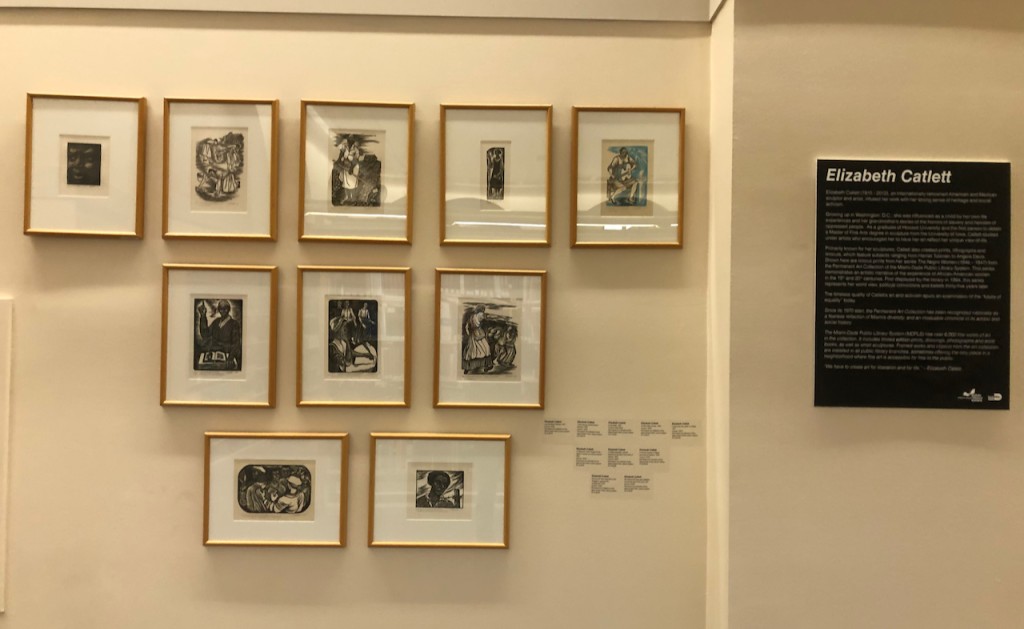
In 2008, Carnegie Mellon University offered her a honorary doctorate and a solo exhibition – ironically, since when Catlett first began her studies, the university rescinded her acceptance into their undergraduate program due to her race.

Catlett instead went to Howard University, then onto University of Iowa where her focus shifted from painting to sculpture with Grant Wood as her mentor. She became the first woman to receive an MFA in sculpture from that university.
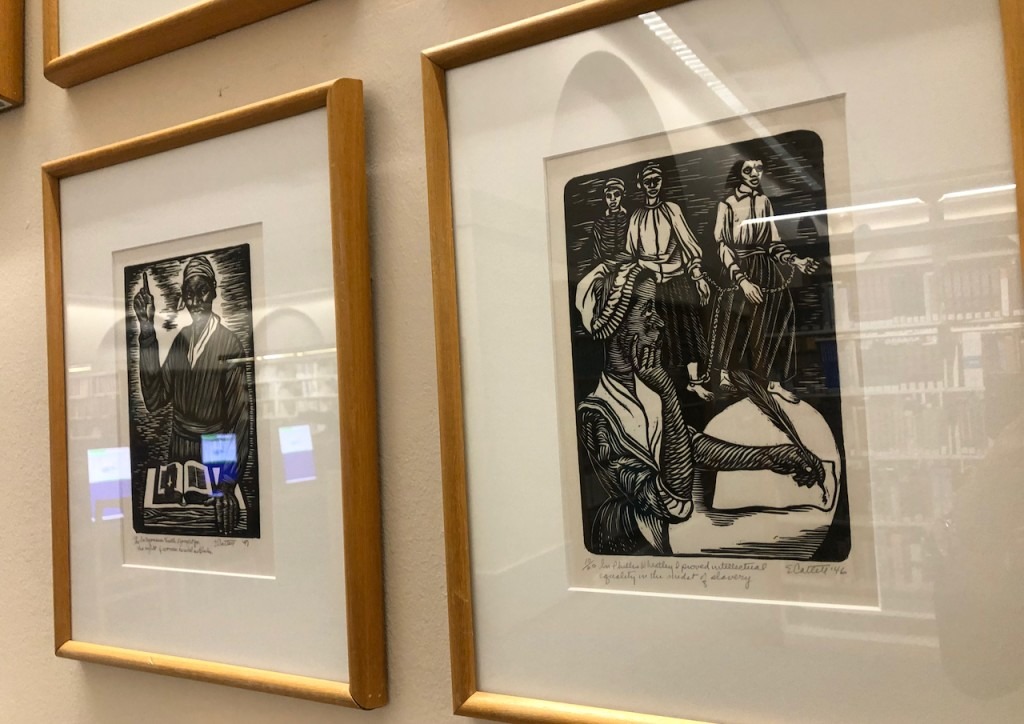
in midst of slavery,” 1946, both linocuts
She had strength from the core of the cosmos. This exhibition shows 14 of her linocuts and lithographs. A quote from her in the didactic panel – “We have to create art for liberation and for life.”
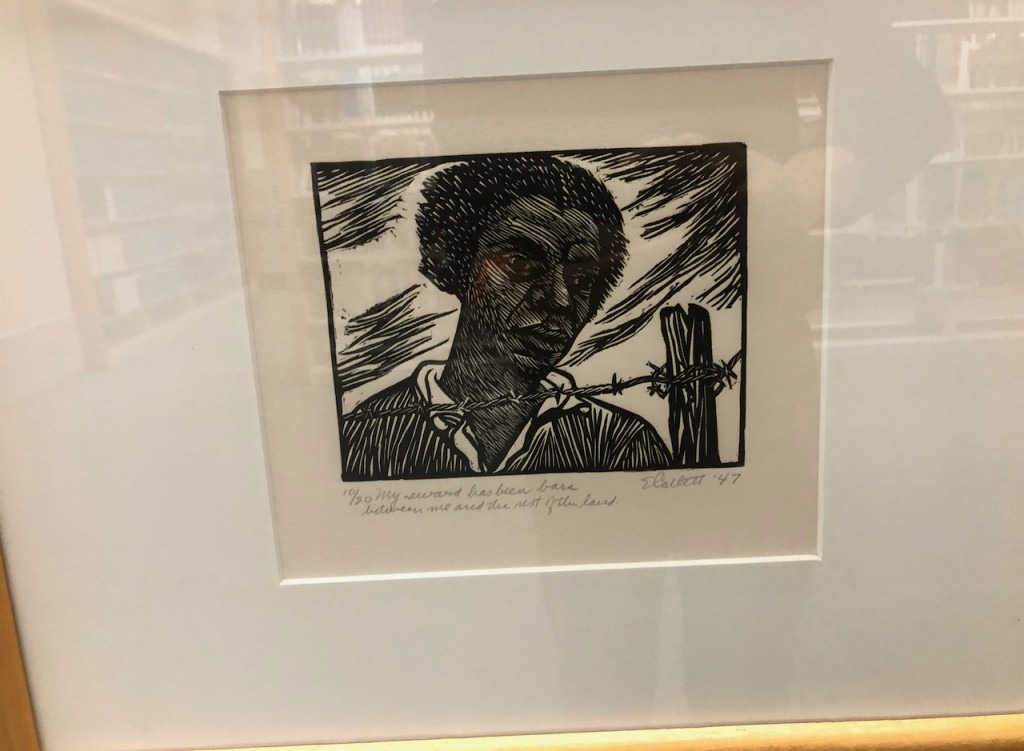
and the rest of the land,” 1947 linocut
In 1962, Elizabeth Catlett was declared an “undesirable alien” by the U.S. Government because of her affiliation with Taller Gráfica Popular, an art atelier in Mexico that promoted sociopolitical art. The U.S. considered Taller a communist front. Catlett then became a Mexican citizen. Years later, the U.S. reinstated her citizenship, but she remained in Mexico.

Her 1946 linocut, And a special fear for my loved ones is an image of a Black man contorted on the ground with a noose around his neck and feet standing on the rope. That special fear continues to echo with today’s ongoing murders because of driving – or simply existing – while Black.
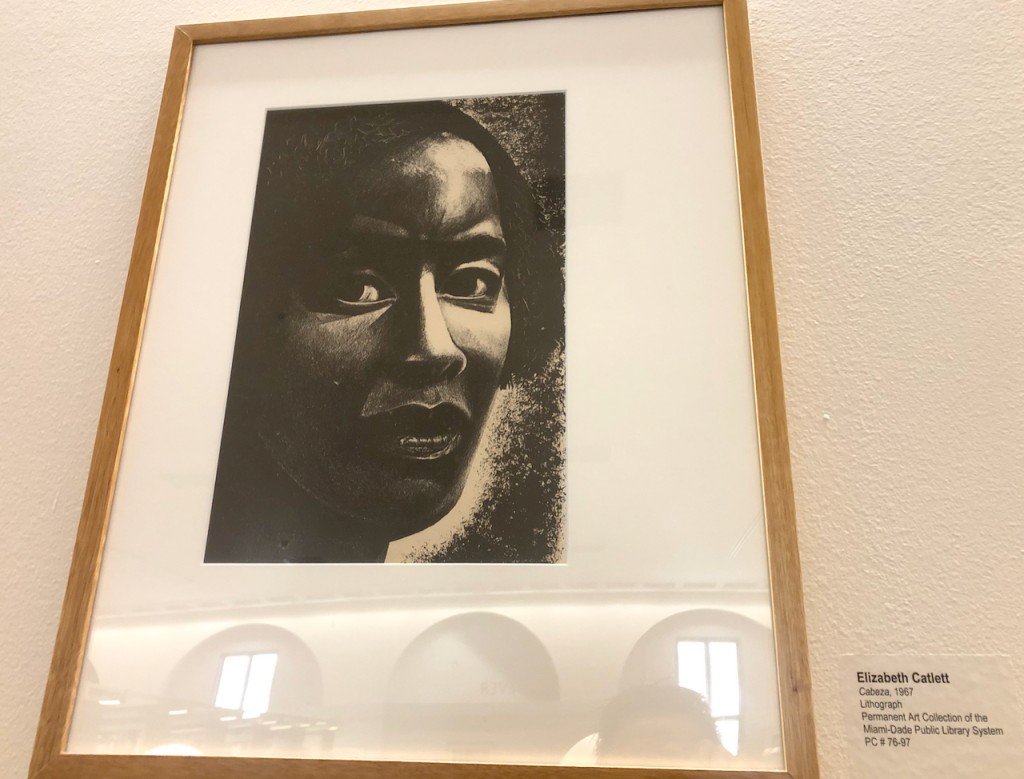
This link gives a good summary of her life in art – nmaahc.si.edu/explore/stories/elizabeth-catlett.
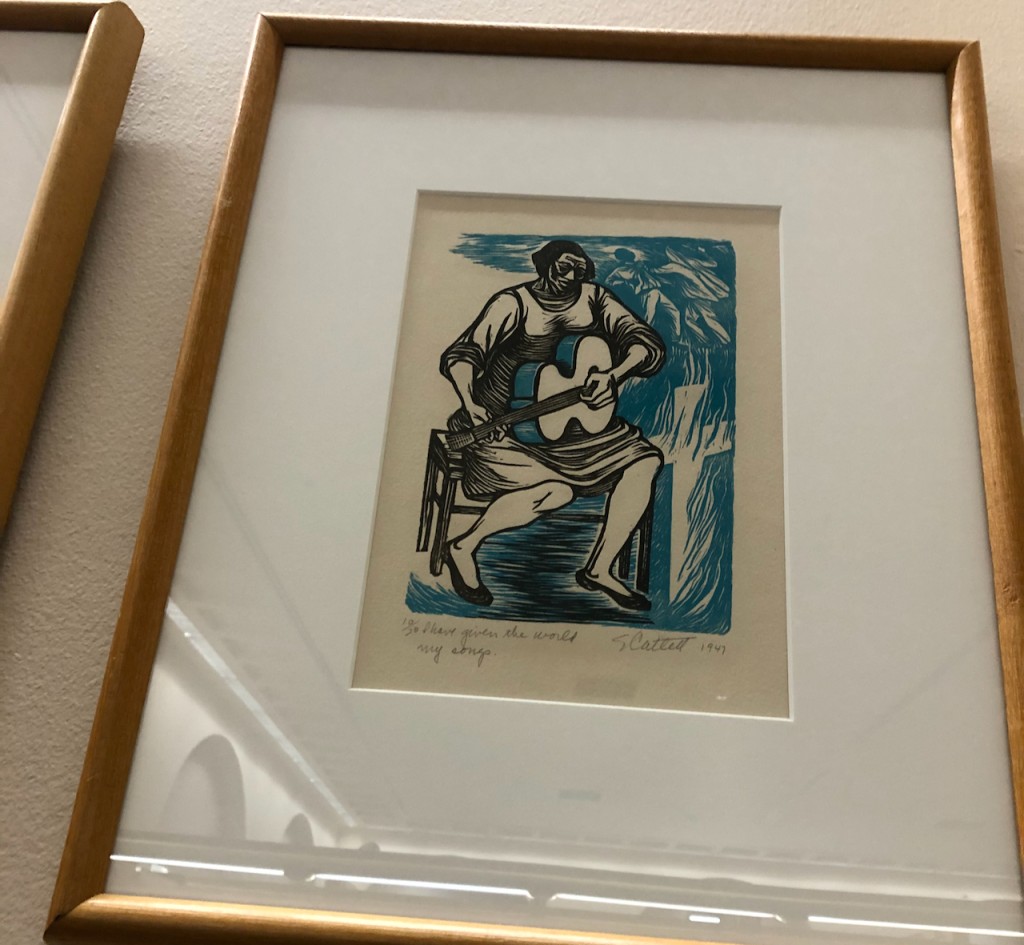
When I was living in Miami Beach and studying at Miami-Dade Community College’s downtown Wolfson Campus, I often visited this library along with the Center for the Fine Arts across the plaza, which is now home to the HistoryMiami Museum.
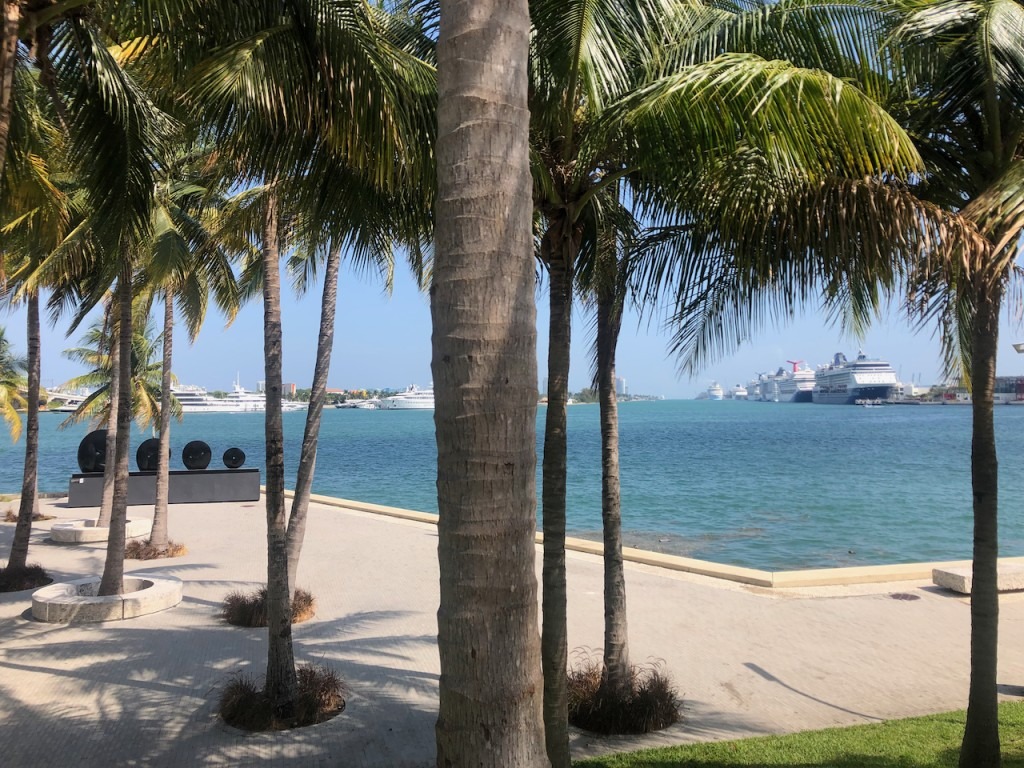
The Center for the Fine Arts evolved to be the Pérez Art Museum Miami, and in 2013 moved to a new building designed by Herzog & de Meuron overlooking the Port of Miami where cruise ships and superyachts dock.
And that’s where I headed next.
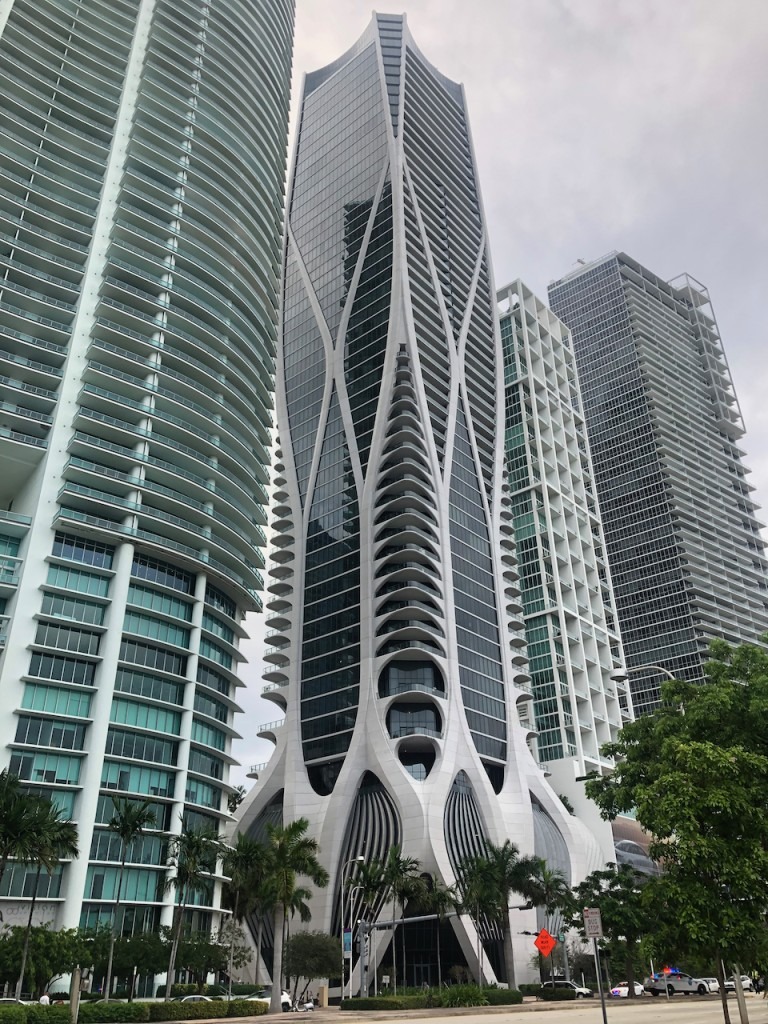
This museum has very high ceilings, airy, spacious and inviting with its adjacent lush Sculpture Garden opening up to the rest of the city.
One distinctive neighbor across the street is One Thousand Museum, a 62 storey residential tower by the radically bold architect Zaha Hadid (1950-2016). Another immediate neighbor is the Frost Museum of Science, which shares a shady garden space with the Pérez.
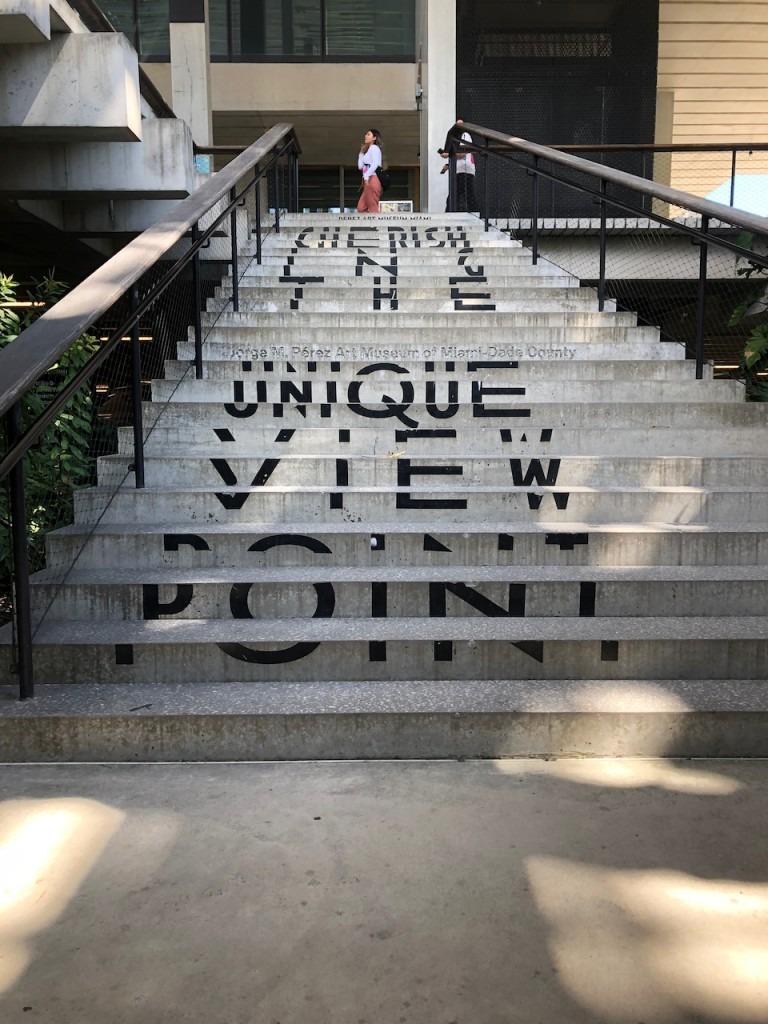
The three levels of the Pérez with galleries connected seem like warrens where visitors create their own navigational paths through the exhibitions and a couple of hours can easily fly by – until the stomach guides the way to the museum cafe on the building’s east side opening out to a broad terrace and amphitheater steps leading to the water’s edge and a sculpture by the quintessential artist Mark di Suvero.
The museum’s website lists their exhibition, event schedules and much more – in English and in Spanish.
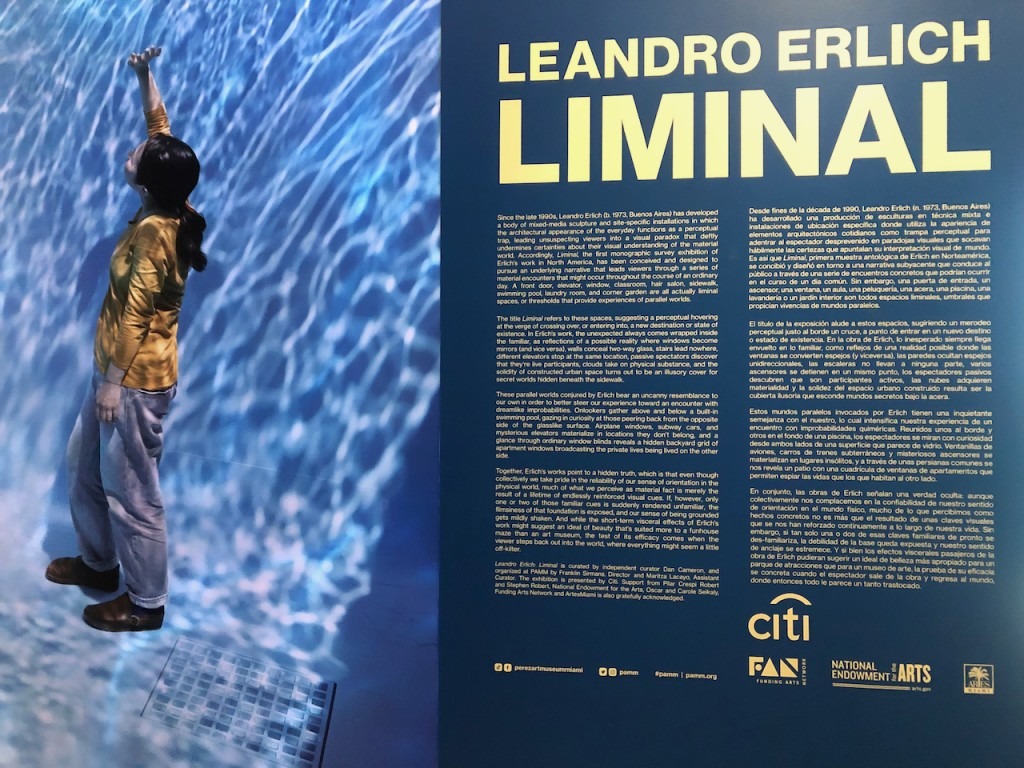
An exhibition curated from their permanent collection occupies most of the first floor galleries. Greeting visitors is a large mandala, or maybe a many-petaled sunflower, composed of high heel shoes titled With a Heart of Gold (2005-06) by Willie Cole.

Cole looks to his African American heritage and transforms everyday objects celebrating his culture, that tell the painful history of Blacks in America. As he explains, “The objects have a memory and history of their own. So if you have a slave, or just a domestic worker, people working for little money, their objects have a memory of that experience.”
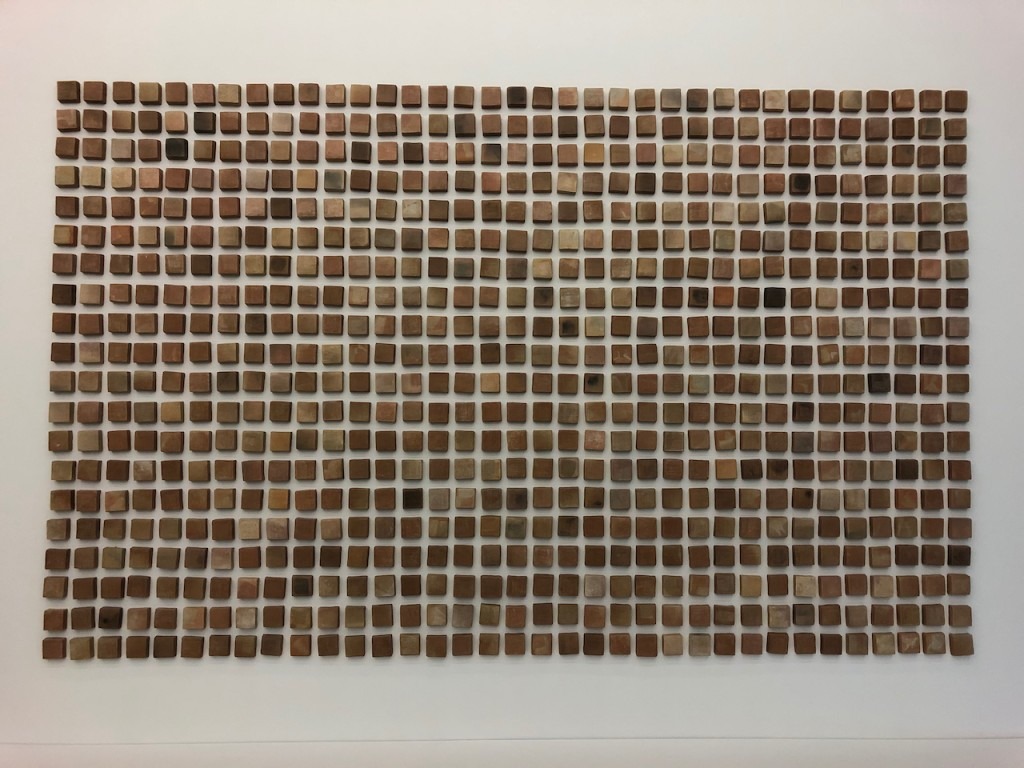
from both sides of the Rio Grande
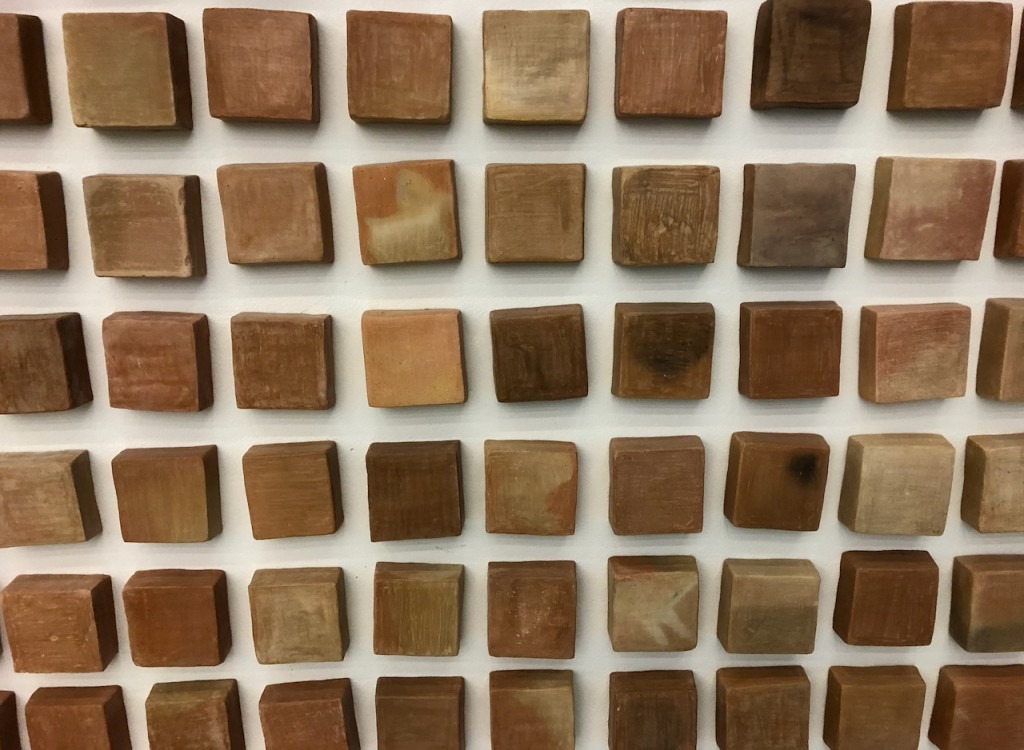
Other exhibitions on view at the Pérez include
. . .
– A collection of drawings by Christo, who with his collaborator and wife Jeanne-Claude famously surrounded 11 islands of Miami’s Biscayne Bay with 6.5 million square feet of pink fabric in 1983.
– A somber sculptural installation of George Segal’s Abraham’s Farewell to Ishmael.
. . .
– Heaven’s Gate, a hypnotic floor-to-ceiling video column collage of pop culture imagery and memes, scrolling through in almost religious reverie by video artist Marco Brambilla.

– Evoking and celebrating the favela communities of Rio de Janeiro, Hélio Oiticica created a walk-in installation of a primary colored wire mesh cube structure outdoors on a bed of landscaped gravel titled Penetrável Macaléia.
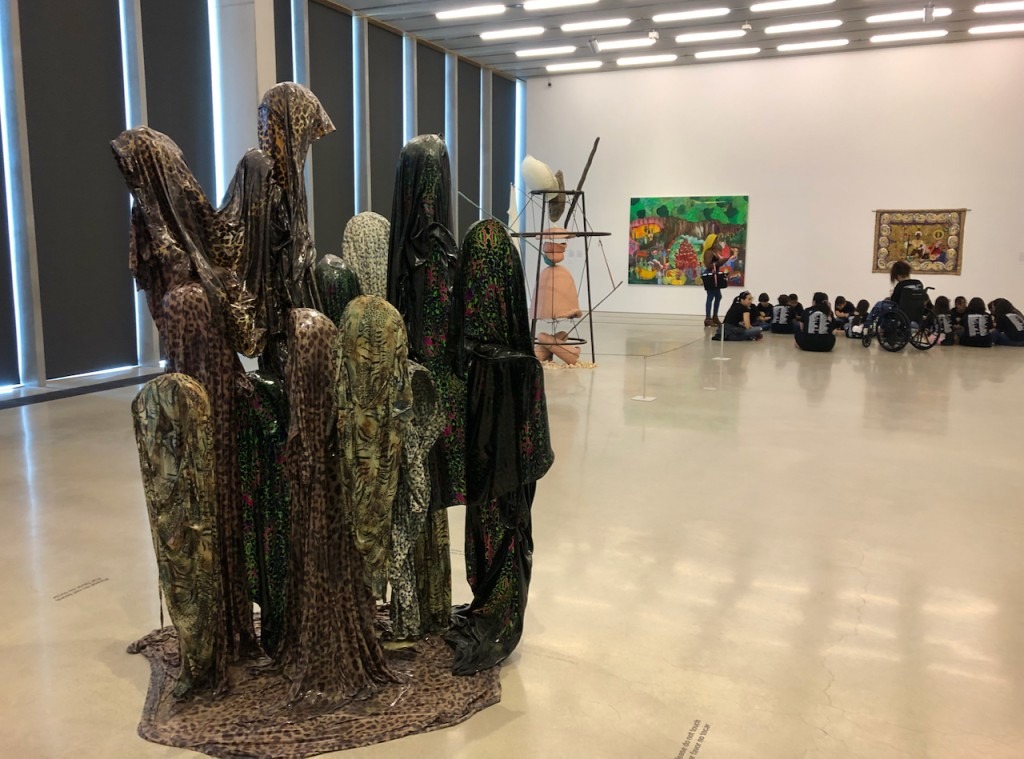
– A Carla Gannis wwwunderkammer installation where visitors enter this virtual space of avatars and boundaries – or lack of – between all the spaces, imagined and real.
– One installation was in progress at the time, Love is Calling, by the Japanese artist Yayoi Kusama whose immersive environments were at the Tampa Museum of Art last year, and that I have experienced in other places. The exhibit just opened last week.
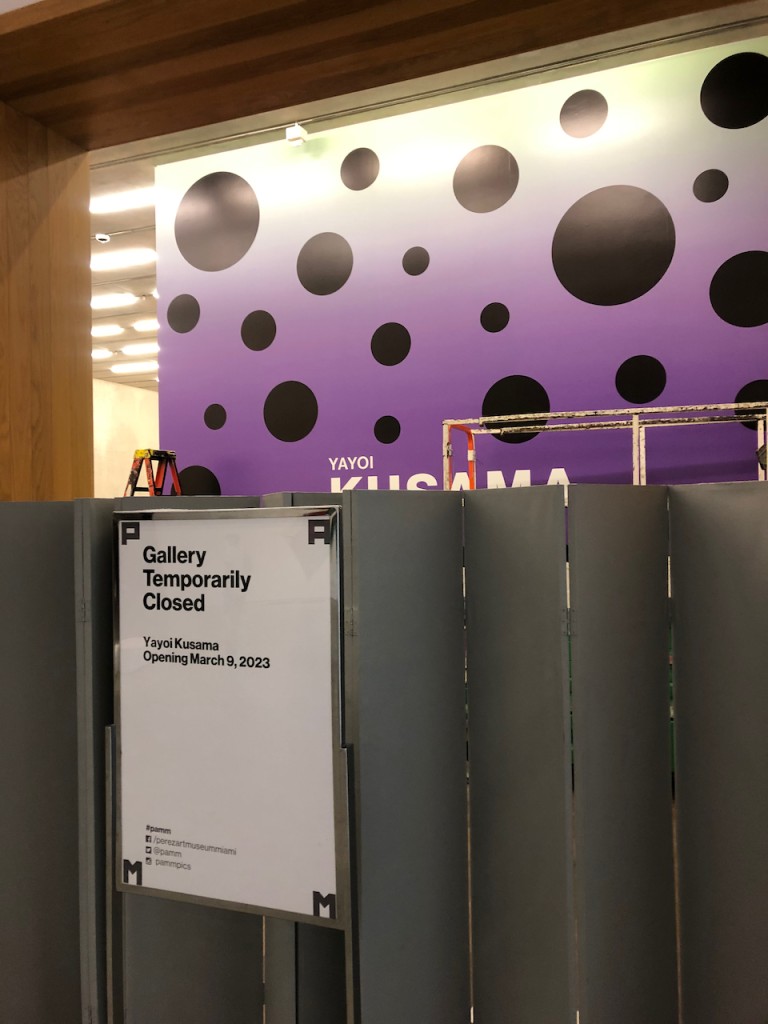
– Another immersive environment, Chromosaturation, created by Carlos Cruz-Diez with intensely saturated red, green and blue lights in three connecting chambers with the colors mixing in the thresholds. Need to sit and rest the retina awhile after this.
. . .
– The feature exhibition on the third level is Leandro Erlich’s Liminal, with ambitious works taking over several large spaces. Exploring moments of disorientation midst familiar places, Liminal includes a pool installation out on the museum terrace where visitors can peer in from above as well as enter and look up from the bottom of the pool.
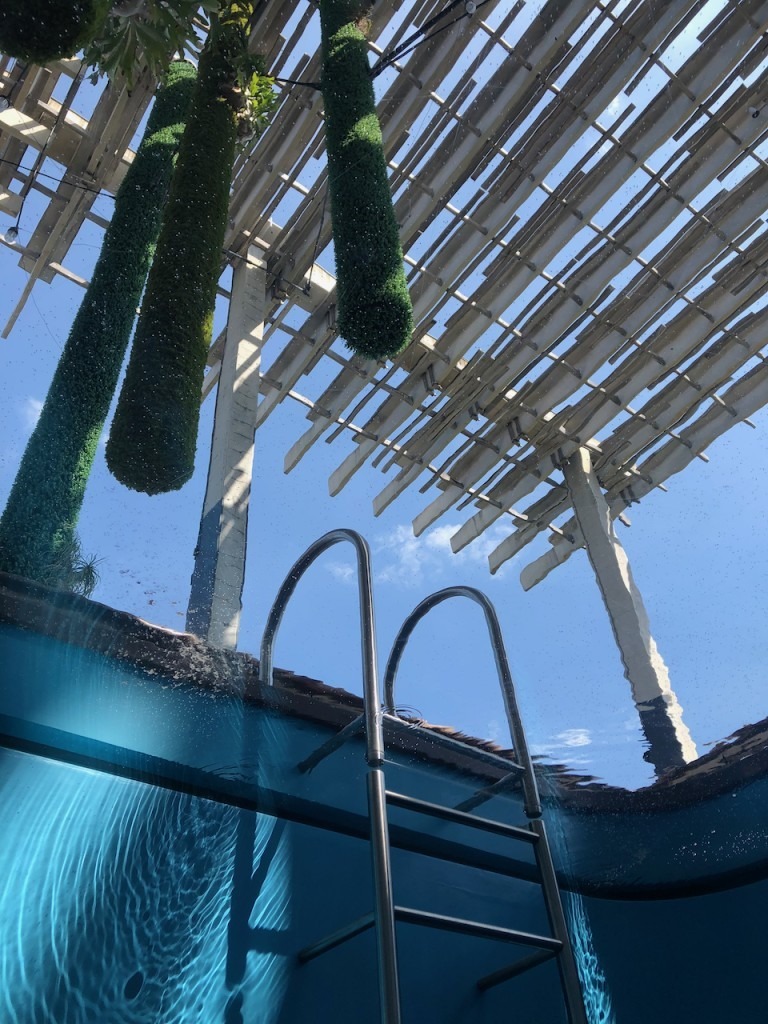
No doubt I’ve may have missed some artworks, perhaps distracted by several delightful groups of students with their teachers, all deeply engaged with the works they were encountering.
Teachers during my early school years never organized such wonderful excursions, until while studying architecture at USF where we took an overnight field trip to Savannah, Georgia to investigate the city’s design of buildings and parks.
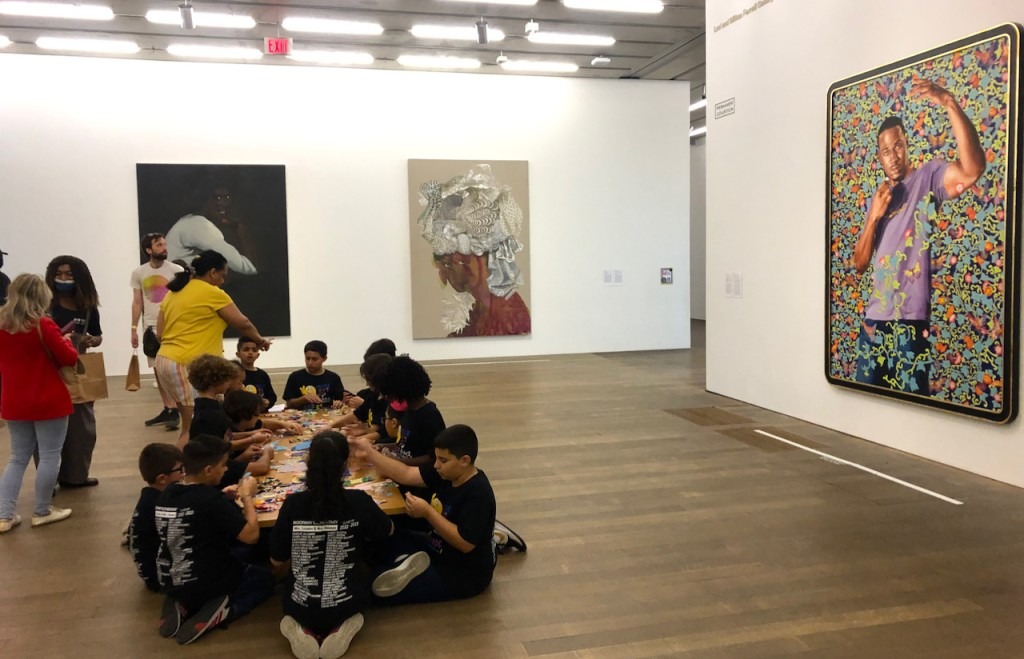
A dominant piece in the sculpture garden is a 39 foot tall white polyester resin and marble dust sculpture, Looking Into My Dreams, Awilda by Jaume Plensa. Awilda, whom Plensa met in Barcelona, is a Dominican who was in Spain with her mother.
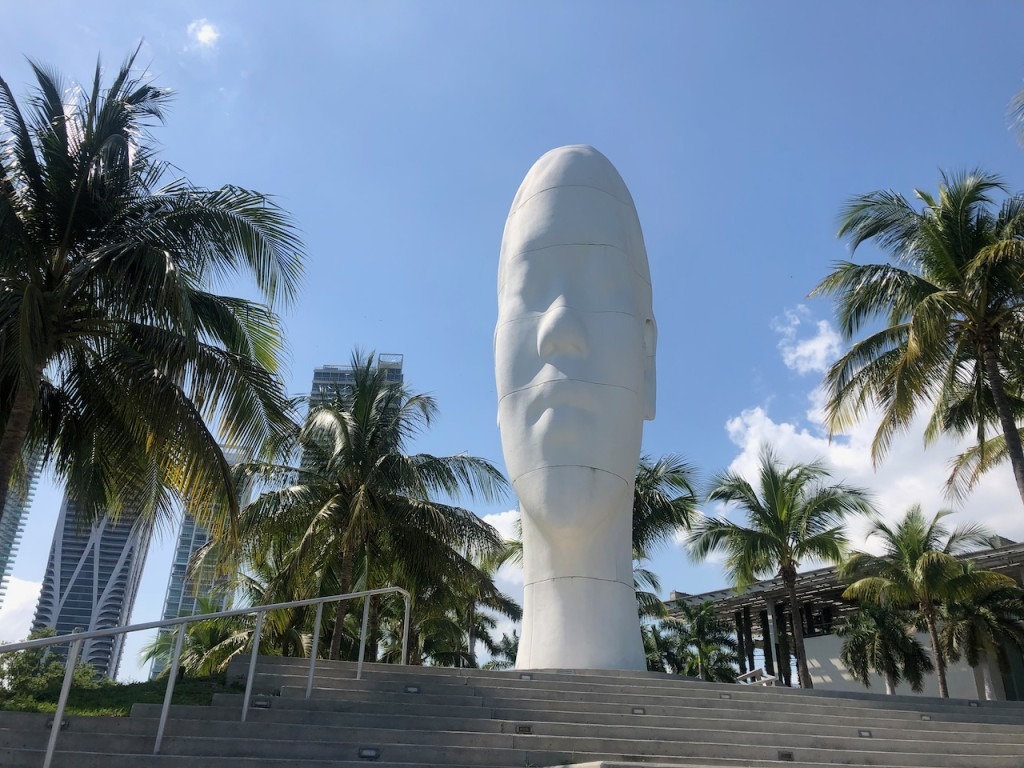
of the Pérez Art Museum
Tampa residents may recognize this artist because another of his larger than life works, a 23 foot tall Laura with Bun in cast iron stands outside the Tampa Museum of Art. Or if you’ve visited Chicago’s Millennium Park, he also designed the the massive Crown Fountain with water spilling from mouth of changing faces like ancient gargoyles.
. . .
Dreams, Awilda” Pérez Art Museum Miami hosted a talk
by world-renowned artist Jaume Plensa
Thus ends my short weekend in Miami, which barely skims the surface of the art experiences available.
Took the Tamiami Trail on my drive back to Tampa – a slower and wilder pace than the blandness of I-75.
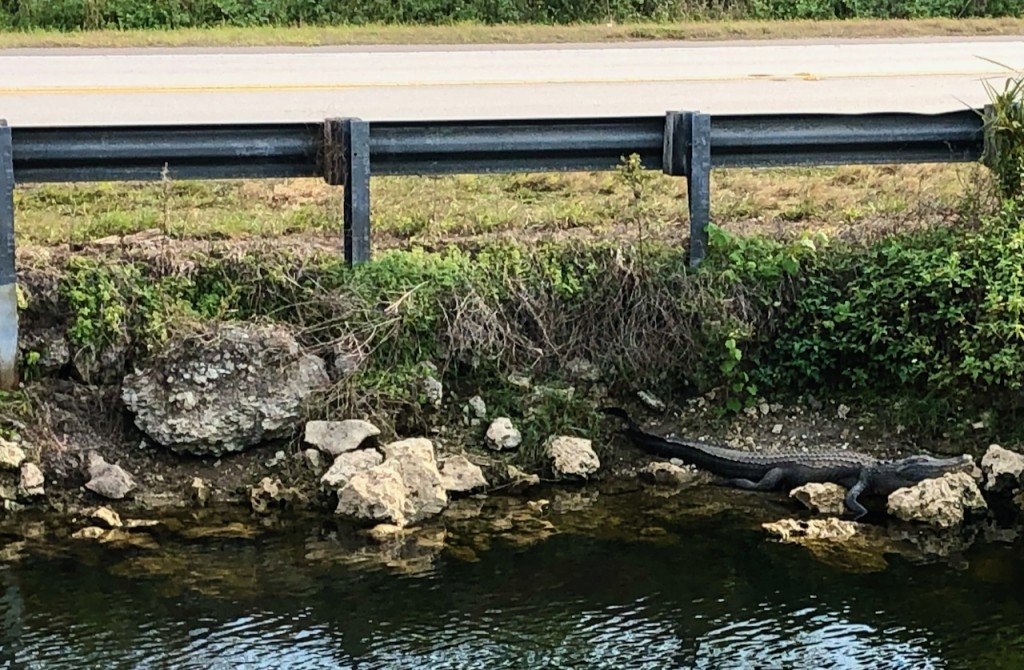
While both routes go through the Everglades, I-75 is a wide swath of clearcut drastically disrupting habitats and the migratory life of its inhabitants – whereas Tamiami Trail, while still a paved road with dangerous speeding vehicles, retains its essence of a trail with waters of the wetland lapping up to its narrow shoulders.
